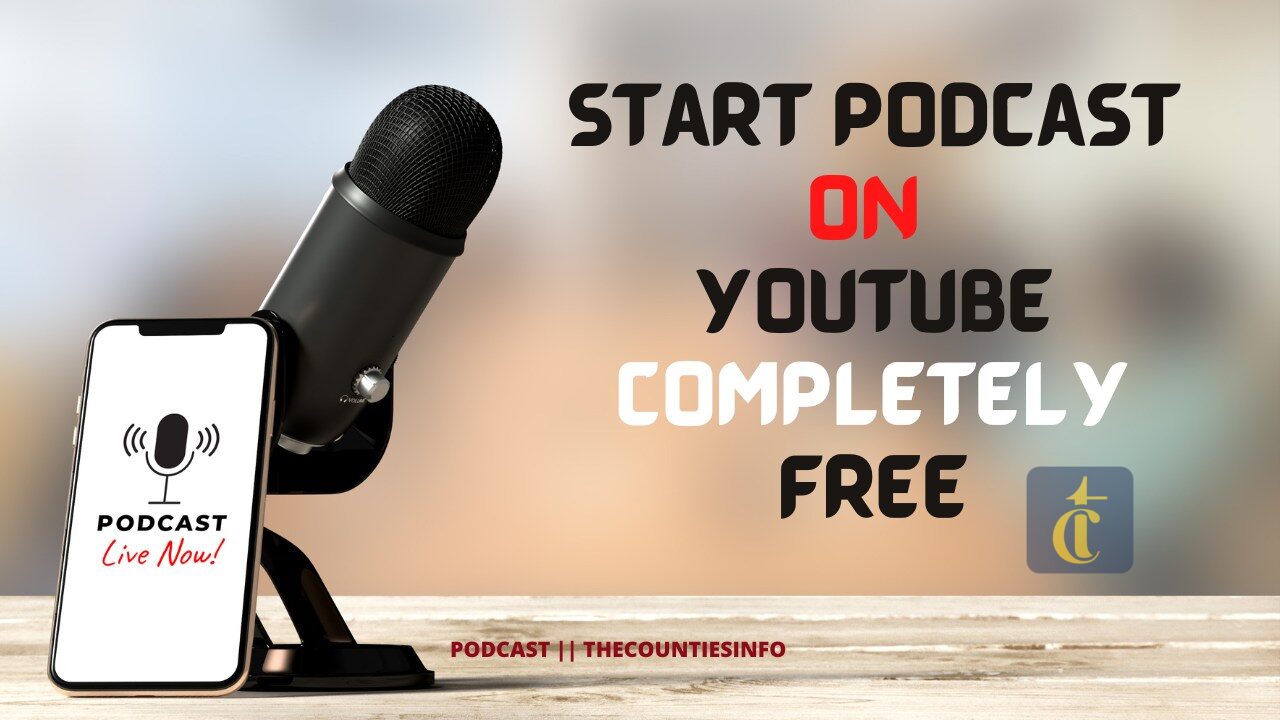Podcasting has become a popular way to share ideas, tell stories, and connect with audiences worldwide. YouTube, with its massive audience and free hosting capabilities, is an excellent platform to launch your podcast without spending a dime. If you’re looking to start a podcast on YouTube completely free, this guide will walk you through the process step by step.
1. Define Your Podcast Niche and Format
Before you start a podcast on YouTube, determine your podcast’s niche and format. Ask yourself:
- What topics will my podcast cover?
- Who is my target audience?
- Will my podcast be solo, co-hosted, or interview-based?
- How long will each episode be?
Having a clear vision will help you attract the right audience and stay consistent. Research trending topics in your niche to ensure your content remains relevant.
Additionally, consider checking out successful YouTube podcasters in your niche to analyze their formats and engagement strategies.
2. Create a YouTube Channel
If you don’t have one already, create a YouTube channel specifically for your podcast.
- Sign in to YouTube and go to YouTube Studio.
- Click on “Create a Channel.”
- Choose a channel name that reflects your podcast brand.
- Add a profile picture, banner, and description that clearly represent your podcast.
- Customize your channel layout, adding a trailer or featured video that introduces your podcast.
3. Get Free Recording and Editing Tools
You don’t need expensive equipment to start. Here are some free tools you can use:
- Recording: Use your smartphone or a free tool like Audacity (for audio) or OBS Studio (for video recording).
- Editing: Edit your audio using Audacity or your video using free tools like DaVinci Resolve, iMovie (Mac), or Clipchamp (Windows online editor).
- Thumbnails & Graphics: Use Canva to create eye-catching thumbnails and graphics for free.
- Royalty-Free Music & Sound Effects: Utilize platforms like YouTube Audio Library and Pixabay Music to enhance your episodes.
4. Plan and Record Your First Episode
Before recording, create an outline or script to stay organized. Here are some tips:
- Choose a quiet space with minimal background noise.
- Use free noise reduction features in Audacity to improve audio quality.
- If using a phone, place it on a stable surface or use a cheap tripod for better visuals.
- Record a test clip to check the sound and video quality before starting.
- Use a pop filter if possible to minimize harsh audio sounds.
Additionally, think about structuring your podcast with a clear introduction, main discussion, and closing remarks. Consider adding a call-to-action at the end, encouraging viewers to subscribe, like, and comment.
5. Edit and Enhance Your Podcast
After recording, edit your podcast to remove mistakes, improve sound quality, and add intro/outro music.
- Trim unwanted parts.
- Normalize audio levels.
- Add background music using royalty-free sources like YouTube Audio Library or Pixabay Music.
- Insert relevant visuals or text overlays if you’re doing a video podcast.
- Add captions using YouTube’s built-in subtitle tool to improve accessibility.
6. Upload Your Podcast to YouTube
Once your podcast is ready:
- Log in to YouTube Studio and click “Upload Video.”
- Choose a compelling title and description with relevant keywords.
- Use engaging thumbnails to attract viewers.
- Add timestamps for sections within the podcast to improve the viewer experience.
- Use appropriate tags and categories to help YouTube recommend your content.
- Create a playlist for your podcast episodes to make it easier for viewers to follow.
7. Promote Your Podcast for Free
To grow your audience, actively promote your podcast using:
- Social Media: Share your episodes on Facebook, Instagram, Twitter, and LinkedIn.
- SEO Optimization: Use relevant keywords in your video title, description, and hashtags.
- Community Engagement: Interact with comments and encourage viewers to subscribe.
- Collaboration: Invite guests who can share the podcast with their audience.
- Reddit & Quora: Answer relevant questions with a link to your podcast.
- Email Newsletter: If you have an email list, send updates when new episodes drop.
Consider repurposing content by creating short clips or highlights from your podcast and sharing them on TikTok, Instagram Reels, and YouTube Shorts to attract new listeners.
8. Monetize Your Podcast in the Future
Once your podcast gains traction, you can explore monetization options such as:
- YouTube Ad Revenue (after meeting eligibility requirements)
- Sponsorships and brand deals
- Affiliate marketing
- Selling your own products or services
- Setting up a Patreon or Buy Me a Coffee page for listener support
You can also repurpose podcast content into blog posts or offer exclusive content to paying subscribers to boost revenue.
9. Maintain Consistency and Improve Quality
Consistency is key to growing a successful podcast. Create a schedule and stick to it—whether it’s weekly, biweekly, or monthly. Additionally:
- Monitor analytics in YouTube Studio to understand viewer behavior.
- Experiment with different formats and episode lengths to see what works best.
- Upgrade your recording equipment gradually as your podcast grows.
- Encourage listener feedback to improve content and engagement.
Conclusion
To start a podcast on YouTube for free is entirely possible with the right strategy. By focusing on high-quality content, consistency, and promotion, you can grow your audience and eventually monetize your podcast.
Follow these steps, and you’ll be on your way to launching a successful podcast without spending a single cent! With dedication and creativity, your podcast can become a powerful voice in your niche. Start today and share your message with the world!
'Want to send us a story? Submit to NAIROBIminiBLOGGERS via our Email nairobiminiblogger@gmail.com'

Drop Your Comments, What do you think About The Article?